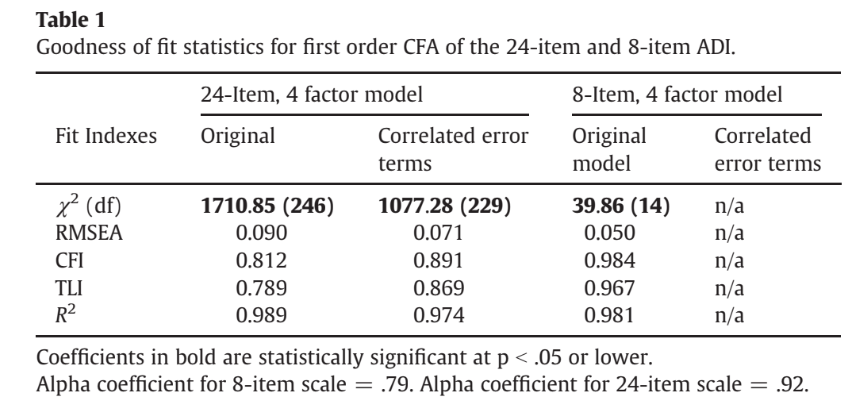Question
While the 24-item ADI was found to have good reliability as a unifactorial construct (? = .92), results of the confirmatory factor analysis suggest that
While the 24-item ADI was found to have good reliability as a unifactorial construct (? = .92), results of the confirmatory factor analysis suggest that the Harrell and Wirtz (1989) four domain design was not an acceptable modeling of the data. As seen in Table 1, the goodness of fit statistics for the original 24-item model were not acceptable (?2 = 1710.85 [246]; RMSEA = 0.90; CFI =.81; TLI = .79). Further, drawing from the modification indices, the specification of multiple correlated error terms improved the goodness of fit statistics but not to the degree that it could yield an acceptable fit for the 24-item model (?2 = 1077.28 [229]; RMSEA = 0.071; CFI = .89; TLI = .87).

Table 1 Goodness of fit statistics for first order CFA of the 24-item and 8-item ADI. 24-Item, 4 factor model 8-Item, 4 factor model Fit Indexes Original Correlated error Original Correlated terms model error terms x (df) RMSEA 1710.85 (246) 1077.28 (229) 39.86 (14) n/a 0.090 0.071 0.050 n/a CFI 0.812 0.891 0.984 n/a TLI 0.789 0.869 0.967 n/a R 0.989 0.974 0.981 n/a Coefficients in bold are statistically significant at p < .05 or lower. Alpha coefficient for 8-item scale = .79. Alpha coefficient for 24-item scale = .92.
Step by Step Solution
There are 3 Steps involved in it
Step: 1

Get Instant Access to Expert-Tailored Solutions
See step-by-step solutions with expert insights and AI powered tools for academic success
Step: 2

Step: 3

Ace Your Homework with AI
Get the answers you need in no time with our AI-driven, step-by-step assistance
Get Started


